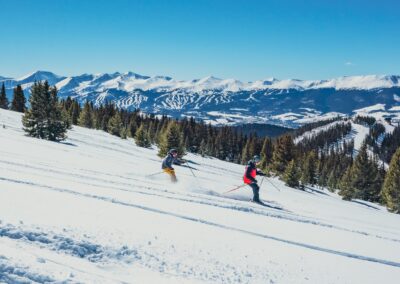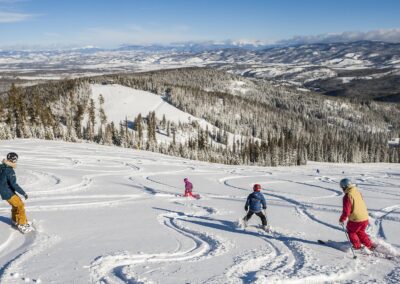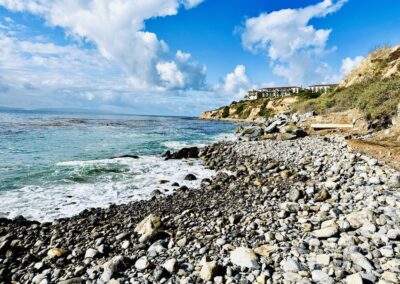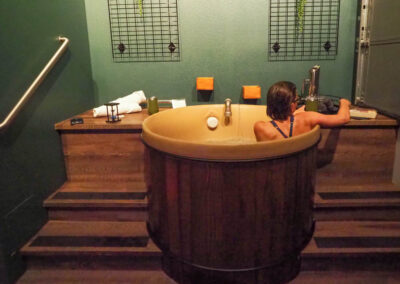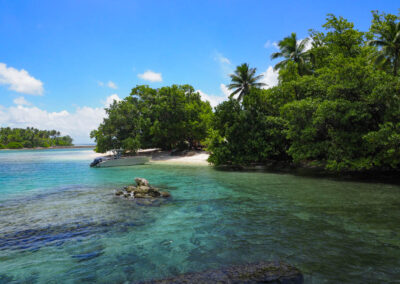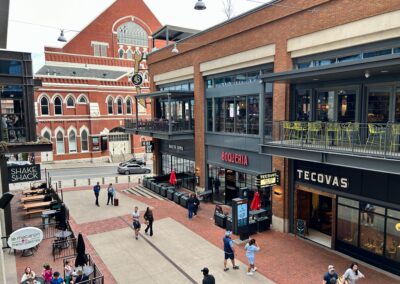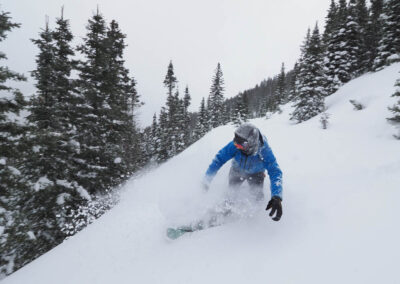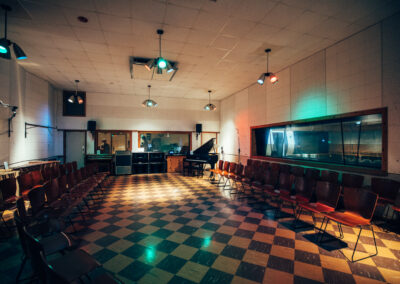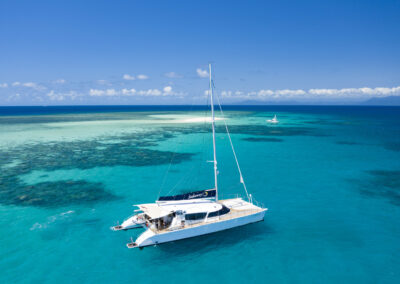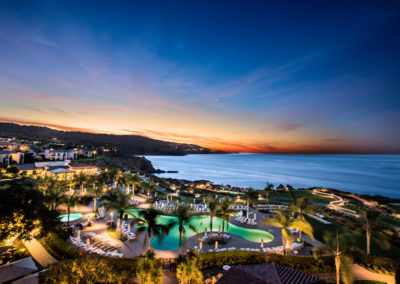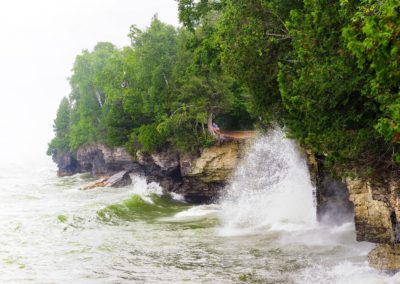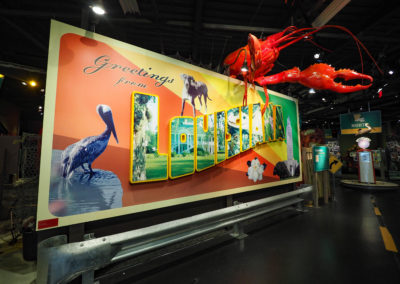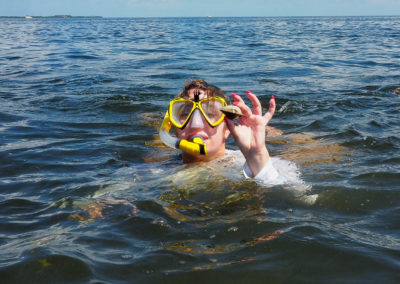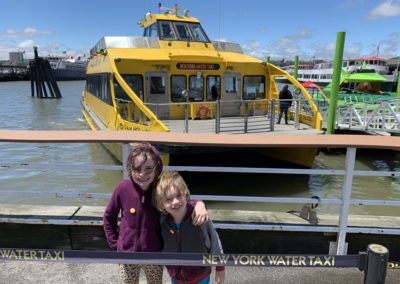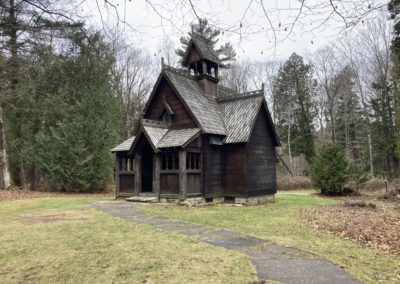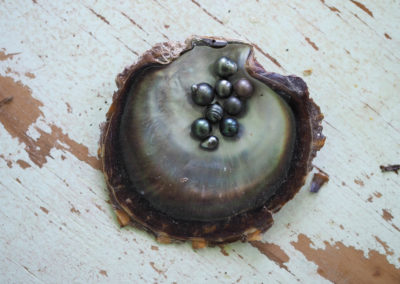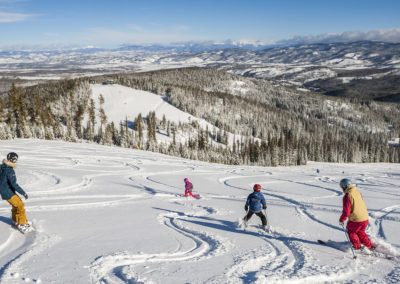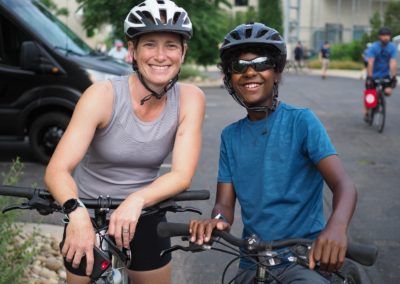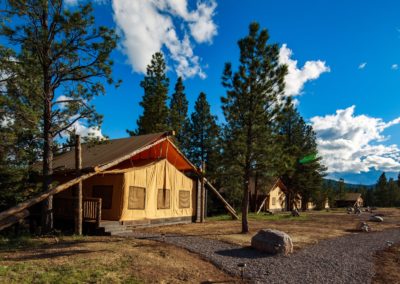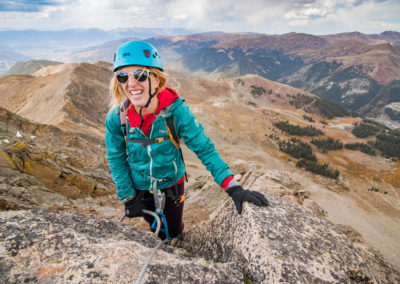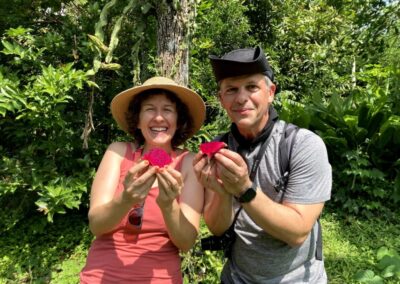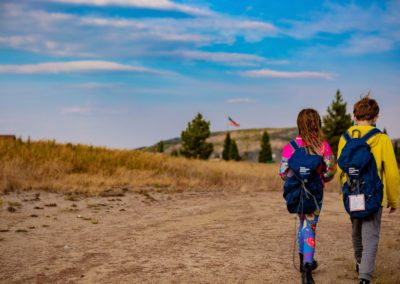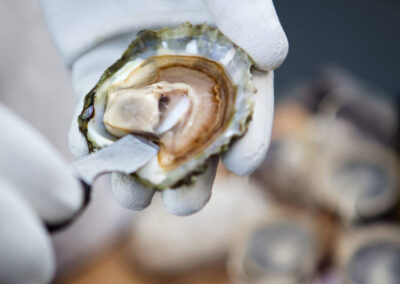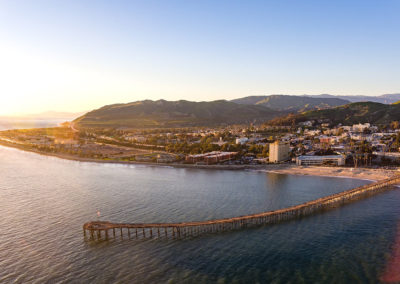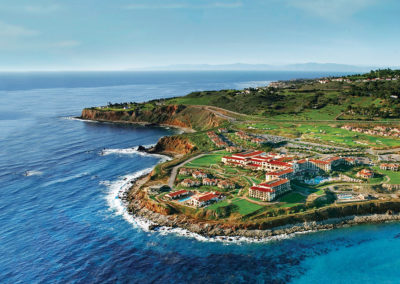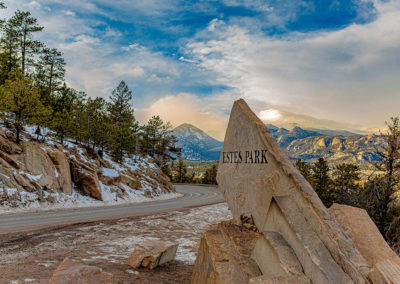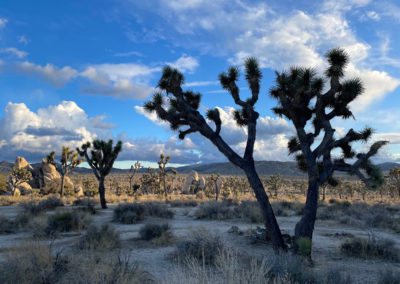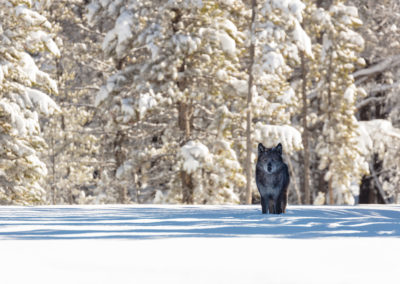In mid-April, my husband and I spent the first night in our new adventure rig––a kitted-out Ford Transit we’ve dubbed Vincent VanGo.
My husband swung open the back hatch while I snuggled under a blanket on the bed and gazed out at the mountains. We were the only ones at East Ridge Campground near Royal Gorge Park in southern Colorado. Before us, an expanse of pine trees and scrub brush faded into a blur of green and gray. In the distance, we could see the outskirts of Canon City, Colorado. We soaked in the view and made a toast to a new, free-wheeling chapter in our lives.
No, we’re not giving up our day jobs. Yes, we’re still home-based in Austin. But with our new all-wheel drive campervan, we can head out West to explore national parks or load up the bikes for a weekend in the Texas Hill Country at the drop of a cowboy hat.

Pam LeBlanc snuggles under blankets inside Vincent VanGo, her new Ford Transit adventure rig. Chris LeBlanc photo
RELATED: Dreaming of the RV life? Lessons learned from a 10-day national park road trip
We spent a week driving Vincent back to Austin from Colorado, taking the long way home so we could do some exploring as we went and getting into the groove of our new lifestyle.
Within an hour of slapping a Vincent VanGo customized name sticker I’d pre-ordered on the side of the silver rig, we were driving down an interstate in a freak April snowstorm, watching in horror as a speeding sedan spun a 360 in the lane next to us. We survived the scare and two days later we were bouncing down a dirt road on our way to go fly fishing in Red River, New Mexico, feeling grateful for all-wheel drive.

Looking out the back of a new campervan while parked at a campground in southern Colorado in April 2021. Pam LeBlanc photo
That was one stop of several. We saw the towering sandstone fins at Garden of the Gods, we took a falconry class at the Broadmoor Hotel, we fly fished in New Mexico, and we hiked at Palo Duro Canyon State Park as we picked our way home.
One night, we parked our rig in the most upscale RV park I’ve ever seen––the Angel Fire RV Resort––just to see how the other half lives. (They live quite nicely, it turns out: laundry facilities, a hot tub, fancy showers and toilets, plus a club house and other amenities I don’t imagine we’ll see very often as we boondock in national forests and park Vincent in parks far and wide.)
We learned a lot as we rolled down the road, and I’ve been flooded with inquiries about the experience from other folks considering getting a similar vehicle. People want to know everything from how much we paid to whether we’ve got a bathroom on board and a million things in between.
So first, some basics about our van, which we purchased in Colorado Springs and had converted into compact mobile living quarters by Wayfarer Vans.
We paid about $52,000 for the all-wheel drive Ford Transit, which has an eco-boost engine, blind spot monitoring, a backup camera, a front camera, all-season tires, dual swiveling seats, and an 8-inch display with Apple CarPlay.
We spent another $15,000 customizing it to fit our get-outside-as-often-as-possible lifestyle. Wayfarer equipped it with cabinets to stow linens and dishes, installed a side window that flips open, a 72-inch bed platform with a forest green mattress pad, and a kitchen space with a sink that uses two 5-gallon containers of water. We added a powerful vent fan to circulate fresh air, a small refrigerator, a lithium battery pack, an extra storage box and a heater.
Ian Horgan, 34, started Wayfarer Vans six years ago because he wanted an adventure van of his own. Now he’s got two workshops, one in Colorado Springs and a new one in Reno. Since opening, the company has converted more than 500 vans into campers.
I like Vincent because he’s basic––no frills, no fancy décor and lots of functionality.
We don’t have a built-in bathroom. That’s what the woods are for. We’ve got a Luggable Loo, basically a bucket with a toilet seat attached, for emergencies. No, there’s not a shower or air conditioning, either. Yes, it will get warm in Texas. That’s why we plan to travel to cooler places.

The campervan does not have a toilet, but the Luggable Loo works in an emergency. Pam LeBlanc photo
RELATED: When the snow melts and winter crowds leave, these Colorado spots are the coolest
Before we flew to Colorado to pick up our van, we shipped ourselves accessories like tent-themed bed sheets, a single-burner stove and dishware, along with smoke and CO2 detectors to my sister’s house in Denver. After we got to her house, we unboxed everything and loaded up our goodies.
Because I had places to check out for travel stories, we had the van two days before we actually slept in it. Temperatures that first night near Royal Gorge (skip the touristy Royal Gorge park, stop at a free overlook for a view instead) dropped into the low 20s, and we burrowed under two layers of blankets and wore our puffy jackets to keep warm as we slept.
I’m 5’8” and can comfortably stretch out on the bed, which runs crosswise to the length of the van. My husband, Chris, is 5’10 and has to position himself just right to make his toes fit. He wishes it was a little longer.
Cooking is fun in a campervan, especially for me because all I do is sit around and sip wine while Chris wields the sharp knives and sauté pans. He made scrambled eggs and bagels fried in butter for breakfast, and easy-to-prepare meals like sausage and beans for dinner. The workspace is compact, but the Gas One stove we purchased for less than $50 uses a can of butane and works great. The small refrigerator (they call it an electric cooler), made by Dometic, holds enough food for three or four days. We stuffed it with beer, water, cheese, eggs, meat and fruit.

Chris LeBlanc cooks scrambled eggs inside Vincent VanGo, his new campervan. Pam LeBlanc photo
In the evening, we fired up a small propane-powered heater made by Olympian. We turned it off when we went to sleep, even though we have a gas detector, just to make sure we didn’t asphyxiate ourselves.
I’ve always loved camping. We joke in my house that I’d rather sleep in a tent than under high thread-count sheets at a luxury hotel. I still plan to backpack and sleep in a tent whenever possible.
But I’ve discovered a new way to roam, and it’s freeing.
The van is always packed and ready to go, and I don’t have to worry about hotel reservations or stick to a pre-planned schedule.
And that, to me, just adds to the adventure.

Pam (not shown) and Chris LeBlanc toast their new campervan, named Vincent VanGo, at a campground in Colorado on April 21, 2021. Pam LeBlanc photo















